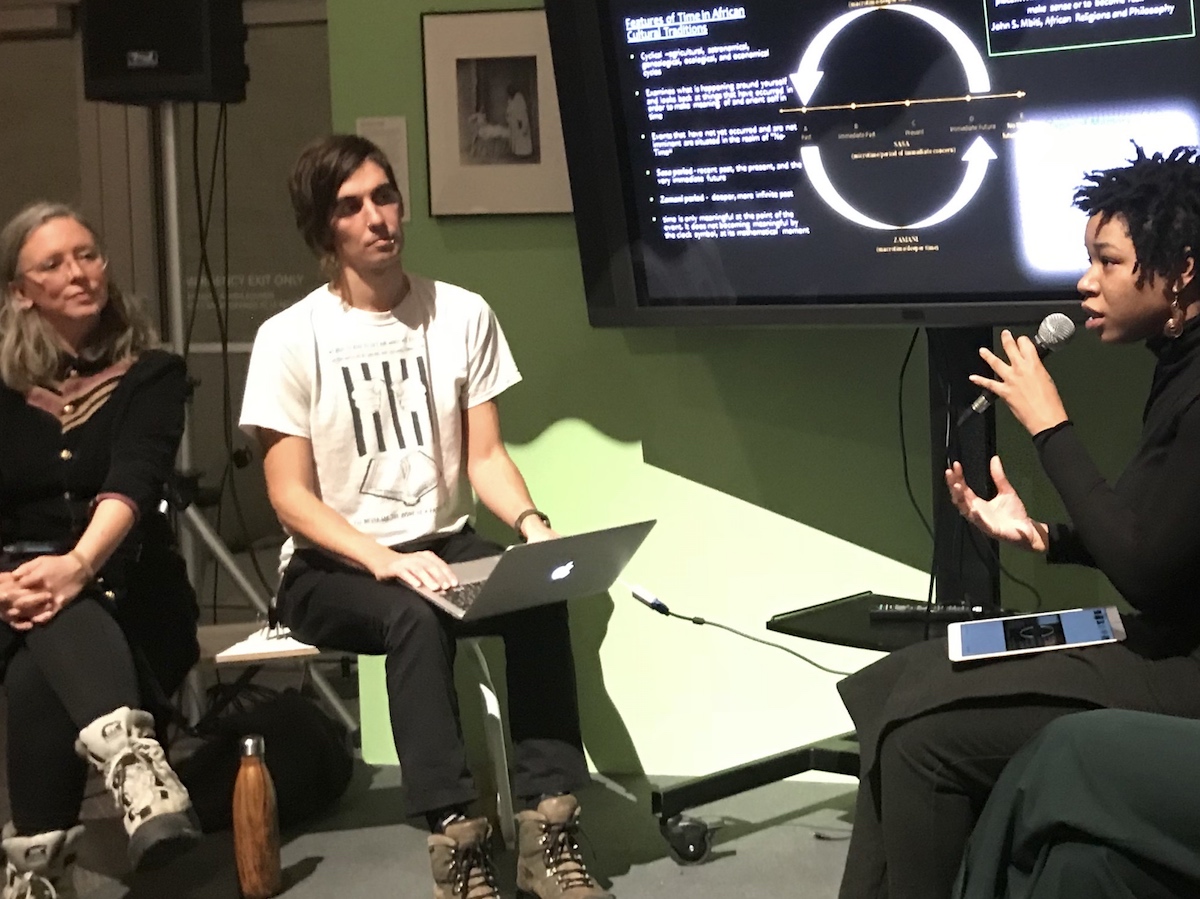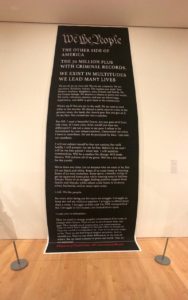PHL Assembled collaborators on empowering marginalized communities through art
 December 12, 2017
Category: Event, Featured, Medium, Method
December 12, 2017
Category: Event, Featured, Medium, Method
On Saturday evening, with a blanket of fresh snow transforming the face of Philly, three Philadelphia Assembled collaborators and A Blade of Grass fellows Black Quantum Futurism and Reentry Think Tank discussed art and societal transformations.
The forward-looking dialogue about “the place of collaboration, community work, and collective imagination in the arts” concluded the run of PHL Assembled, a collective art project about “radical community building” in the city, at the Philadelphia Museum of Art.
“When we come together to create moments and communities together, we decide when our moment begins,” said Black Quantum Futurism cofounder (and Community Legal Services managing attorney) Rasheedah Phillips at the start of the event.
Just like that, Phillips and Reentry Think Tank cofounders Courtney Bowles and Mark Strandquist came together with the audience to create the moments in which they explored how to uplift the traumatized as peers through art.
Phillips and Black Quantum Futurism partner Camae Ayewa work with marginalized Black communities while Bowles and Strandquist engage those who have a criminal record (in Philly, that’s one in six people). Presenting together for the first time, their missions shared three tenets:
1. Changing surroundings
Our surroundings affect us. That’s why spaces that allow people to shatter stereotypes matter.
Bowles and Strandquist advocate for co-design of the social service spaces intended to assist those in reentry. Changing the hostile environment of law offices across the city to one that is comforting and beautiful, they said, turns an expungement clinic into an uplifting experience rather than one that is shameful or re-traumatizing.
Positive notions of how Black communities experience space and time are at the core of the intangible surroundings that Phillips and Ayewa champion, Phillips said. Communal memories and histories allow participants to reject oppressive conceptions of time at the root of the cycle of poverty. Their art replaces negativity with motivating frameworks based on futurism and non-linear cultural traditions.
2. Empowering individuals
Supporting the traumatized in rediscovering their voices can take many forms, but is always integral to sustainability and independence.
Individuals returning to their communities after time in prison face many hurdles. Bowles and Strandquist want to change this by empowering the voices of those who have reentered. They have collaboratively developed a “People’s Bill of Rights” and fight for the value of returning citizens’ expertise so they can become hired consultants to improve the reentry experience.
Rather than allowing linear time to define the quality of a moment, Phillips and Ayewa want to help individuals break free from clock time. Mapping out a “quantum moment” of the characteristics therein allows participants to own the past or present and uncover otherwise hidden reflections.
3. Envisioning the future
For uplifted people within an enabling environment, the next step is pursuing a radically shifted narrative for moving forward.
A criminal record is a narrative written by the law enforcement system. Bowles and Strandquist have led participants in redefining that narrative by shredding and blending their paper criminal records into a new “clean slate” on which they write about the future they look forward to without their record.
“There is ugliness in the world, but there is also beauty that needs to be celebrated,” said Bowles of her work.
At Black Quantum Futurism’s Community Futures Lab, Phillips and Ayewa have explored how those displaced from their homes in the Sharswood neighborhood of North Philadelphia envision their futures. Mapping out a return to their futures through a vision map helps participants consider what they hold important for the future and the accompanying timeline.
To cap off Saturday’s discussion, one unexpected and eerie moment underscored its realness: YouTube denied the presenters permission to view a video of housing in Sharswood being demolished for redevelopment as residents booed, shutting down access to that history.
Project
Philadelphia AssembledTrending News










